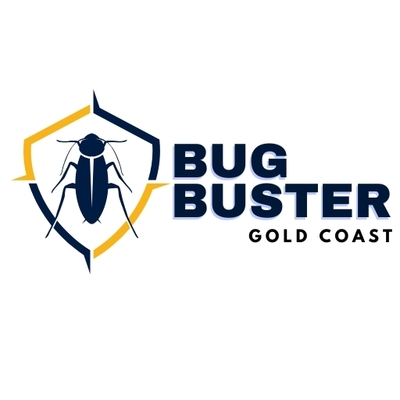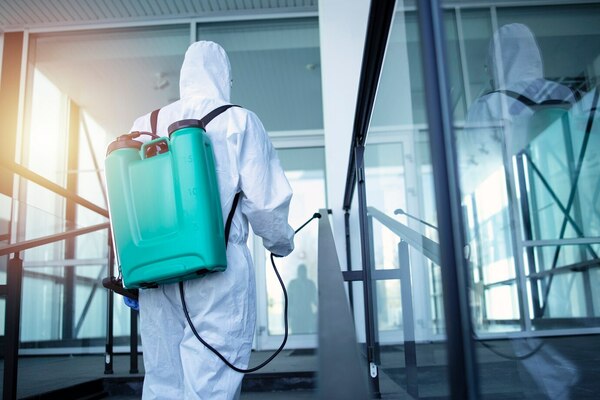Notifications
ALL BUSINESS
COMIDA
DIRECTORIES
ENTERTAINMENT
FINER THINGS
HEALTH
MARKETPLACE
MEMBER's ONLY
MONEY MATTER$
MOTIVATIONAL
NEWS & WEATHER
TECHNOLOGIA
TV NETWORKS
VIDEOS
VOTE USA 2026/2028
INVESTOR RELATIONS
DEV FOR 2025 / 2026
ALL BUSINESS
COMIDA
DIRECTORIES
ENTERTAINMENT
FINER THINGS
HEALTH
MARKETPLACE
MEMBER's ONLY
MONEY MATTER$
MOTIVATIONAL
NEWS & WEATHER
TECHNOLOGIA
TV NETWORKS
VIDEOS
VOTE USA 2026/2028
INVESTOR RELATIONS
DEV FOR 2025 / 2026
About Me
 Bug Buster Gold Coast
Bug Buster Gold Coast Bug Buster Gold Coast delivers effective pest control solutions for both residential and commercial properties. We specialize in handling termites, bed bugs, fleas, mosquitoes, ants, and more with safe treatments that ensure peace of mind. Our focus is on providing reliable services at competitive prices.
 Bug Buster Gold Coast -
7 hours ago -
Family & Home -
Termite Inspection
Termite Treatment
-
10 views -
0 Comments -
0 Likes -
0 Reviews
Bug Buster Gold Coast -
7 hours ago -
Family & Home -
Termite Inspection
Termite Treatment
-
10 views -
0 Comments -
0 Likes -
0 Reviews

Termites are silent destroyers, capable of causing thousands of dollars in property damage before homeowners even realize there's a problem. Because these pests often work from the inside out, spotting an infestation can be challenging without professional help. When dealing with termites, homeowners are often faced with two key terms: termite inspection and termite treatment. While they may sound similar, they serve different purposes and are crucial at different stages of termite management.
Understanding the difference between termite inspection and termite treatment is essential for maintaining the structural integrity of your home and avoiding unnecessary expenses. This article will break down the purpose, process, cost, and timing of each to help you make informed decisions about your property.
A termite inspection is the process of thoroughly evaluating a building or structure to determine if there is a termite infestation or conditions that might lead to one. It’s often the first step in termite control and should be performed regularly—even if you don’t currently suspect termites.
Routine maintenance: Experts recommend annual termite inspections, especially in areas prone to termite activity.
Before buying or selling a home: Termite inspections are commonly required during real estate transactions.
Signs of infestation: If you notice mud tubes, discarded wings, hollow-sounding wood, or other indicators of termite activity.
A licensed pest control professional will:
Examine interior and exterior parts of the structure, including basements, crawl spaces, attics, and wooden structures.
Look for signs of active termites or past damage.
Identify areas of moisture or wood-to-ground contact that could attract termites.
Provide a detailed report of findings and recommended actions.
The cost varies by region and property size but typically ranges from $200 to $300. Some companies offer free inspections, especially if you follow through with treatment services.
Termite treatment refers to the methods used to eliminate an existing termite infestation or to prevent one from occurring. It can be curative (to get rid of termites already present) or preventative (to deter termites from attacking a structure).
After an inspection confirms termite activity
As a preventative measure in high-risk areas
Following construction, especially in termite-prone regions
Liquid Termiticides
Applied in the soil around and under a structure to create a chemical barrier.
Effective against subterranean termites.
Can last up to 10 years with proper application.
Termite Bait Systems
Involves placing bait stations around the property.
Termites consume the bait and carry it back to the colony, eventually eliminating it.
Less invasive and more eco-friendly but slower to act.
Fumigation
Used for drywood termite infestations.
Entire structure is tented and filled with a gas that kills termites.
Requires vacating the premises for several days.
Wood Treatments
Surface sprays, foams, or injections directly into infested wood.
Best for localized infestations.
Pre-Construction Treatments
Chemicals are applied during building to prevent termites from entering in the first place.
Treatment costs can range from $500 to over $2,500, depending on:
The type of treatment
The size of the property
The severity of the infestation
The termite species involved
| Feature | Termite Inspection | Termite Treatment |
|---|---|---|
| Purpose | Detect presence and risk of termites | Eliminate and prevent termite infestations |
| When Performed | Routinely or before buying/selling home | After detection or as a preventative measure |
| Duration | Typically 1–2 hours | Varies from hours to days |
| Professionals Needed | Licensed inspector | Pest control technician |
| Cost Range | $200–$300 | $500–$2,500+ |
| Outcome | Report and recommendations | Elimination and/or prevention of termites |
Yes—termite inspections and treatments work best together as part of an integrated pest management strategy. Even if your home is currently termite-free, regular inspections ensure early detection, while preventative treatments reduce the chance of future infestations.
Here’s how a typical timeline might look:
Annual Inspection → Ensures no current termite activity.
Treatment (if needed) → Applied when activity is detected.
Preventive Measures → Optional treatment or structural changes to deter termites.
Follow-up Inspections → Monitor the effectiveness of treatment.
While DIY termite detection and treatment products are available, they are rarely as effective as professional services. Termites are elusive and persistent, and a missed infestation can lead to extensive damage. Hiring licensed professionals ensures:
Accurate identification of termite species
Proper selection and application of treatments
Adherence to safety and regulatory standards
Warranty or service agreements for ongoing protection
In the battle against termites, knowledge is power—and timing is everything. Termite inspections are your first line of defense, helping you detect a problem before it becomes a crisis. Termite treatments, on the other hand, are necessary to eliminate and prevent infestations that could otherwise compromise your home’s structure and value.
Homeowners should view inspections and treatments not as either/or options, but as complementary components of a sound termite management plan. By staying proactive and working with experienced professionals, you can protect your property from one of nature’s most destructive pests.
